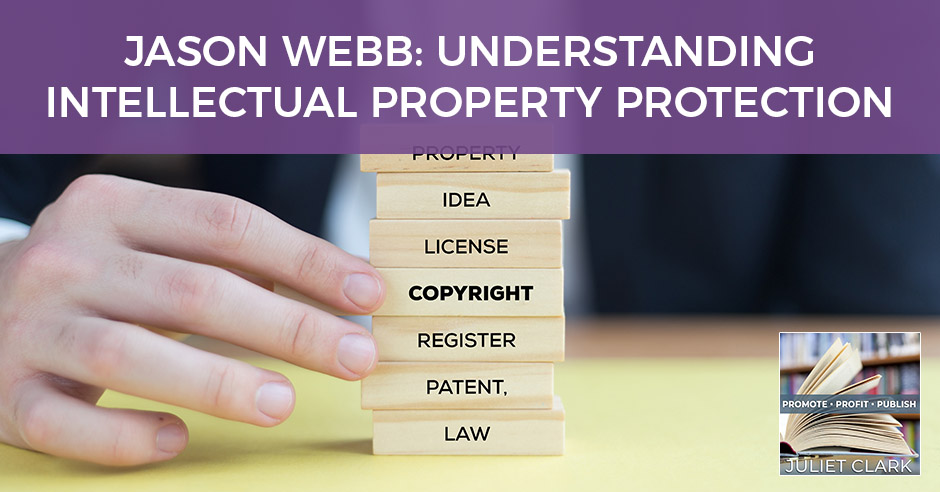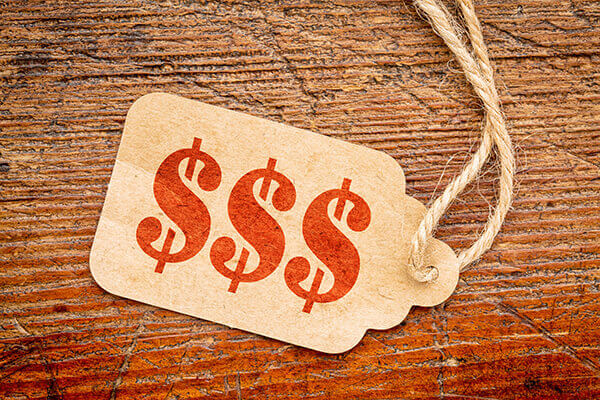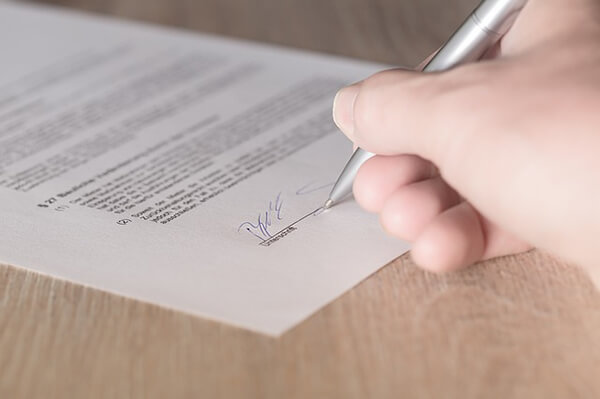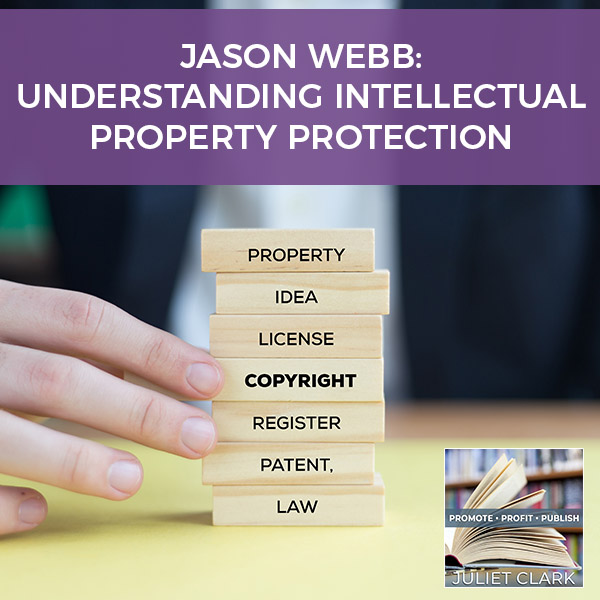
—
Watch the episode here:
Listen to the podcast here:
Jason Webb: Understanding Intellectual Property Protection
My guest is Jason Webb. I have known Jason for a while now. He’s a pretty cool guy. He is an Intellectual Property Attorney and a Partner at Pearson Butler in Utah. He has a Bachelor’s Degree in Applied Physics and Computational Modeling from BYU, which means he’s a super smart guy. He also assisted in experimental laser physics and cancer research. He has a law degree and specializes deep experience with patent, trademark and copyright law. He has successfully negotiated licensing agreements and settlement agreements for his clients with Fortune 500 companies. Welcome, Jason.
I’m excited to be here.
The reason I wanted him to come in is I saw him at Magnify Your Wealth in San Diego, which is funny because Jason lives very close to me in Utah and we never see each other except at events in other states. We had a conversation about trademarks and coaches with programs and copyrights and all those things. I thought that it would be great to share some of his expertise. If you have books, products and services, how do you know what to protect?
There are a lot of things that you could protect. You want to be able to prioritize. The first one is to identify what’s even possible to protect. The things that you can protect are the things that you created that are creative, new, different or distinctive. There’s something special about them. You could do that. You can go through a list of everything about your business and everything about your plans for the future for your business. Write down all the things that meet those criteria because those are the things that tend to be protectable.
Then what you want to do is you want to prioritize those and look at, “Which are the ones that are the most important to the revenue streams,” because that’s the lifeblood of your company. That will help you filter things to the top of the list that is maybe more important than some of the other things that you love a lot. That is very valuable to you personally, but maybe they’re not quite as valuable to the company financially. You could spend a whole lot of money on protecting intellectual property, but you want to think of it as an investment. You’re investing in your business. You’re investing in helping your business to grow and to thrive and succeed. Those things that are the closest to those revenue streams, they’re the things to make the most defense.
One of the conversations you and I had was about the book world. This happens a lot in the music world as well, that people are under the impression that if they mail their material to them, it is now copyrighted. You and I had the conversation about that might be all fine and well, but it’s not enforceable.
I don’t know how that myth persists, but it does. It is one of those things that I never stopped hearing about. It doesn’t help at all to do that. It doesn’t give you any copyright rights or give you any trademark rights or allow you a license. It doesn’t do anything. The only thing that you could use it for would be to prove a date that you had thought of something or come up with an idea or created something. The problem is that if you’re relying on that, you take that into court, you open it in front of the judge and here’s the thing, it has the date stamp on the envelope. The next day, through lots of different techniques, they are easy to do that you could look online and learn how to do it. They could come in with another envelope that’s dated around as old as yours is and open it up. Then you look like you’re a liar.
You look like you’re a charlatan. You look like you’re trying to check everybody. If you’re trying to prove that something happened on a certain date, then it’s way better to have witnesses sign that thing. You’d take that same document and you’d have some people who are trustworthy, who have good backgrounds and would be good witnesses in court. You have them sign and date the bottom and have them state something like, “Seen and understood by” and then they sign their name and then the date. That’s far more persuasive in court. The thing is proving that something happened on a certain date doesn’t come up very often.
There’s a better way. You can copyright it formally, which you have a certificate, you have something issued by the government that proves it.
The government has something on record and the government stamped it with a particular date. That’s not a date that anybody can contest. If that date shows up in court, there’s nothing they can do about it to make that date go away. The government said that it happened. A copyright registration, a trademark application, those both get date stamps as soon as we file it. Not only does that date matter to prove, “I had this idea or I came up with this at least by this date,” the date matters for giving you enforceable rights. Filing copyright registrations or filing trademark registrations make a big difference in the rights that you have.
The damages that people can be subject to for copying things that are protected, they can be huge damages. I’ve seen companies completely fold because they got copied and they couldn’t do anything about it because they didn’t do the right stuff in the beginning. I’ve also seen companies fold because they copied somebody else’s stuff, got caught and that company had done what needed to be done to be able to put leverage against them. It makes sense because typically about 60% to 80% of the value of most companies in America is in the intellectual property. If you have a hold on that asset, that amount of value, that’s enough to swing your company to either make it or not.
Let’s say that I did everything I was supposed to do, but then I can’t afford to enforce my rights. What happens then? What if I can’t take somebody to court? I don’t have the money. Attorneys like you are expensive.
You could spend a whole lot of money on protecting intellectual property, but think of it as an investment. Share on XI’m part of the American Intellectual Property Law Association. We take stats all the time. Every two years, we do this big huge questionnaire and then we get a book that tells us what everybody else has been saying about those questions. One of the things that you see is that it’s hundreds of thousands of dollars to do a lawsuit from start to finish, to enforce your intellectual property rights. I don’t know anybody that has $400,000 sitting around doing nothing, waiting to sue somebody, but it doesn’t come down to that. Less than 5% of disputes ever make it to a complaint.
Most of the disputes are resolved and dealt with a cease and desist letter and maybe a little bit of negotiation. Even small businesses can handle that cost. You’re looking at hundreds of dollars, maybe a few thousand dollars and then you’re done and then the problem is solved. Of those less than 5% that go to a lawsuit, less than 5% of those make it all the way through the lawsuit. That $200,000 or $400,000 or $500,000, almost nobody’s spending that. That’s more big Fortune 500 companies that are running into things like that. Everybody else is resolving their disputes early and getting some good justice without having to spend tons of money.
One thing that we get mixed up on a lot as entrepreneurs is what’s the difference between a copyright and a trademark? Are they separate things?
For one, if you feel like you’ve got something to protect, whether you go to an attorney and say, “I want a trademark,” or you go and say, “I want a copyright,” if you’re wrong about what you’re saying, your attorney would figure that out pretty soon. I wouldn’t stress too much about having to know the answer to that question. That said, it is nice to know. Copyright is about protecting content. That’s where we’re protecting books, videos, sculptures, paintings, photographs, illustrations, website development and computer code. Those are all things that are protectable by copyright. It’s your content. It needs to be something that you created. The author is the one that owns the rights to that unless they sign the rights away. Whoever it is that created it, you’ve created something and that something is protectable.
It’s automatically protectable under common law copyright, but that protection is very weak. It doesn’t give you any leverage to do anything more than just ask someone to stop, which is not very much leverage. Trademark, on the other hand, is for protecting elements of your branding. Your branding is how people find you. That’s your company name, those are your product names, those are taglines that you use or it could be trade dress like bottle designs for liquor companies. The Apple store has a trademark registration on the way the Apple store looks. The way everything’s all lined up and open and it’s a dual array with tables. Anything that when people see it, they’re like, “I know which company this is involved with.”
The brown trucks, you can see a big, huge, brown, boxy truck on the road. You do not see any lettering on it and you’ll assume it’s UPS. All of those things are things that are protectable by trademarks. You can think of it, if you’re in the business of teaching or coaching or writing books or you’re an expert, those things are protectable. A lot of times your copyright protects what you’re selling and your trademark protects how they find you to buy what you sell. You don’t want somebody else using the way that people find you to find them too because then some of your customers will siphon off to someone else and that’s not fair.

Intellectual Property Protection: By having a monopoly on how to find you and on what you sell, you’re able to have good pricing for yourself.
You also don’t want someone else to be selling what you sell. You want to be the only one or the only place where they can get this particular piece. By having a monopoly on how to find you and a monopoly on what you sell, you’re able to have good pricing for yourself. You’re able to manage and control the interaction with your customers. Can you imagine if someone bought something from someone else and thought they bought it from you? It turned out it sucked. Then they’re posting reviews online about you, about how your stuff sucks. It doesn’t make any sense from what they say about it because yours doesn’t suck. That’s a big mess. Not only is that a lost customer or lost revenue but that’s even worse. People now are thinking bad things about you that aren’t true.
We had a situation that happened. My daughter got a car cover that was horrible and she posted a bad review on their Facebook page and it turned out to not be the same company. They were really upset, “Remove that.” She’s like, “Why do you have the same name as someone else?” On the copyright, you bring up an interesting point. Let’s say that I have a book and I’m going into an updated version or I have a program that I’m updating. A website is another great example that you talked about. Do I have to file a copyright every single time I update?
Our protection laws are designed to protect specific things in specific ways. They’re set in stone. They don’t automatically update. It’s like if you buy a property, if you end up annexing part of your neighbor’s land, you would have to go then redo stuff on the title in order to make it clear, “Now, I actually own this strip, too.” It’s the same thing. When you make significant updates or upgrades or changes to what’s yours, then you need to make sure that your intellectual property adjusts along with it. A lot of times that means filing a new copyright application or filing a new trademark application. Companies evolve and grow. They are organic. The protection laws are designed to be a wall. They’re designed to be rigid and strong and protecting. Those things don’t tend to naturally change.
I get a lot of questions about licensing programs. People want to license their program IP. What’s the difference between that and the copyright?
Licensing, the easiest way to think of it is like renting. In fact, renting is a form of licensing. Licensing is when you give someone rights to something that you own or that you’re licensing. Generally, in exchange for something. In order to do that, you have to own it first. I can’t walk into a library with you and then say, “I’m going to license you this chair.” I don’t own the chair. I don’t have any rights to it. I have an implied license to sit in it, but so do you. Neither of us could just walk out that place with the chair. Even if I told you I licensed it to and gave you the license to walk out with the chair, that wouldn’t work.
First of all, you need to own what you’re going to license. That’s filing the copyrights, filing the trademarks. It’s the same thing if you’re an inventor, filing patents. You’ve got to own it first. Once you own it, then you can license it. Licensing is like renting. You have a licensing agreement, which is a lot like a rental agreement. When you rent a car, that’s a license. When you rent an apartment, that’s a license. Renting furniture, that’s a license. You can rent things that you can’t touch. You could rent the right to use someone’s trademark. In the world of certified professionals, that happens with trademarks. Probably the most common certification mark that people recognize would be the movie rates, the G, PG, PG-13, R.
About 60% to 80% of the value of most companies in America is in the intellectual property. Share on XThose are owned by a company that owns those marks. They don’t use them because of their certification marks. What they do is they licensed the right to use them to other people but under certain conditions. If I’m that company, you have to send me your movie, you have to pay me to watch it. I then tell you based on what I saw in the movie, which rating I’m willing to license for you and how much you have to pay me for that license. Only if we go through that process can you put the rating up on the screen saying this is rated R or this is PG-13. CPA is another one where that’s a certification mark. You have a lot of certified professionals. Some of those certifications that you put after your name, they’re trademark registrations and you have to go to the people that own them. You have to satisfy their requirements to meet their standards.
A lot of times it’s like annual continuing education and you have to pass a test, you have to pay an annual fee and as long as you do all those things, you get to use the mark. What that does is that allows the consuming public to trust what you’re providing because they see that certification mark. In the movies, they see it, they know it’s not going to have more than a certain amount of whatever. Whereas the certification mark, they know you’ve at least past a certain amount of training. If you want to be the company that does that, that trains people and send them out to get to the world to do their thing and use your certification mark, then you first need to own that certification mark. You need to have a program in place of their standards that they have to pass in order to use it and then you license it to them with a license to print.
I never knew that about the rating system for the movies. Seriously, somebody owns that?
Yeah and if you look at electronic devices, there’s a mark, a UL, which is Underwriters Laboratories. They own that. What that means is if you’re a producer of electronics, you sent it to them. They’ve checked it to make sure it’s not emitting the wrong kinds of radio frequency waves. That it doesn’t get too hot and that it meets all sorts of electronic requirements for safety. If you try to produce electronic products and don’t go through them, you try to sell in Walmart or Target or any of these stores, they look and they don’t see the UL on there, they’re just, “We’re not going to buy any of these because what if it blows up in someone’s house? You haven’t proven to us that it’s been checked for safety.”
I never knew that. Licensing is complicated and somebody’s making a bundle off of PG-13.
Their job is to watch movies. That’s pretty awesome.

Intellectual Property Protection: Copyright rights can’t be transferred by anything except for a signed written agreement that clearly transfers those rights.
How do I get that? Maybe I can just change the standard system and have them convert to my system. Is that X too? Do you have to watch all the X movies?
I don’t know if they own that. I think X is maybe something that people made up. I think the MPAA is the organization that does it and they weren’t willing to give anything out. What actually happened, they weren’t willing to give anything worse than R. They didn’t want to be associated with that. Then people started saying, “It’s X-rated movie,” I don’t think anybody owns that. I think people were putting that on whenever they thought it applied. Now, MPAA has the NC-17, so they own that one. There must be people paid to watch movies that are supposed to do the NC-17 rating and then they decide whether it’s appropriate or not.
If you learn nothing else in this episode, you just learned how movies are rated and that somebody out there has a cool job, many people. Now, that you’ve given me all of these different things to think about, when do I use the copyright, the trademark and the circle R symbol?
The copyright symbol you can put on anything that you believe that you own that’s copyrightable. If you take photographs, do illustrations, write books, do webinars, videos or anything that’s recorded in a tangible form. If you write music, if you perform music, you can put a circle C on there. The date it was published and then your name or the name of your company if the company is the one that owns it. You don’t have to have a copyright registration to use that one. It’s free to do. You don’t have to talk to a lawyer and you can put it on there. I would have the habit of using that all the time. I’m surprised how many people had told me when they got caught taking someone else’s content, “I thought it was free because it didn’t have any copyright symbol next to it,” which is not accurate. Just because it doesn’t have the copyright symbol, it doesn’t mean it’s free. That tells you that there are a lot of people out there who won’t take something if it has the copyright symbol and will take something if it doesn’t. If yours has the copyright symbol, they won’t take yours. I put the copyright symbol.
What if someone says freely like, “Use anything of mine you want,” should you not take them at face value and go back and get that in writing?
If you’re using it for personal uses, educational uses and not educational use, you’re probably fine. Especially if they come back and say, “Stop it,” you could stop. If it’s something that’s important to your business, I will get something in writing because oral licenses to use copyrighted material can be revoked. They could say yes now and they could say no tomorrow. If you can’t handle them saying no tomorrow, then you got to get something in writing. That’s another thing too is the copyright rights can’t be effectively transferred by anything except for a signed written agreement that clearly transfers those rights. That includes, even if you have a signed written agreement that pays them to produce the material, they still own it. If that agreement doesn’t also clearly transfer the rights, if it says, “I’m paying you to make this and you’re making it for my company,” that’s not enough.
Just because something doesn't have the copyright symbol doesn’t mean it’s free. Share on XTrademark and the circle R symbol?
The TM symbol, you can use anytime. You don’t have to talk to a lawyer. You don’t have to have anything filed. Put that next to anything that you consider to be your brand. That’s your company name, product names, taglines or anything that you feel is part of your work. Then the circle R symbol, you can only use that if you have a trademark registration. I would hold off on using that until your attorney says you’re good to go.
Can you use that while it’s pending or you have to use the other while it’s pending?
Use the other while it’s pending. You can only use the circle R when it’s registered. The registration number or registration dates, all of those things have to be in place.
Jason, where can we find you if we need to clarify some more?
My law firm is PearsonButler.com. I have a personally branded website, JPWebb.us. You can find me either of those places. You can also search for Jason Webb and add attorney. You can find me that way too.
Do you have something free you’re going to give away to us?
I’ve put together something that I called Legal Lifesavers. It’s an email program that took me six months to put together. It’s a whole bunch of things that are free for entrepreneurs. If you sign up for it, you get something free in email and then a month later, another thing and then another thing. For twenty months, you get one thing a month for free. They’re all things that I’ve designed that I think are helpful for entrepreneurs. Some of them are sample contracts. The first ones are three different NDAs and instructions on how to use them and instructions on how to pick between them. There’s also a guide to reduce your risk of litigation. There’s also an English dictionary for intellectual property and entrepreneurial terms and legal terms. There are lots of things. If you want to sign up for that, there’s a banner at the bottom of my JPWebb.us page that you can click on and sign up.
Thank you so much. That was very illuminating. I’ve learned more than I ever needed to know about the rating system. I’m going to have to go inquire about who invented X. Thank you very much.
Thanks a lot for having me. I love it.
Important Links:
- Pearson Butler
- Magnify Your Wealth
- American Intellectual Property Law Association
- Underwriters Laboratories
- MPAA
- PearsonButler.com
- JPWebb.us
- Legal Lifesavers
- http://bit.ly/1Sc15AE – Free gift
- www.LegalLifeSavers.com
About Jason Webb
 Jason Webb is an intellectual property attorney and a Partner at Pearson Butler. He has a Bachelors of Science degree in Applied Physics and Computational Modeling from Brigham Young University where he assisted in experimental laser physics and cancer research.
Jason Webb is an intellectual property attorney and a Partner at Pearson Butler. He has a Bachelors of Science degree in Applied Physics and Computational Modeling from Brigham Young University where he assisted in experimental laser physics and cancer research.
Mr. Webb has deep experience in patent, trademark, and copyright law. He has successfully negotiated licensing agreements and settlement agreements for his clients with Fortune 500 companies.
Love the show? Subscribe, rate, review, and share!









Leave A Comment